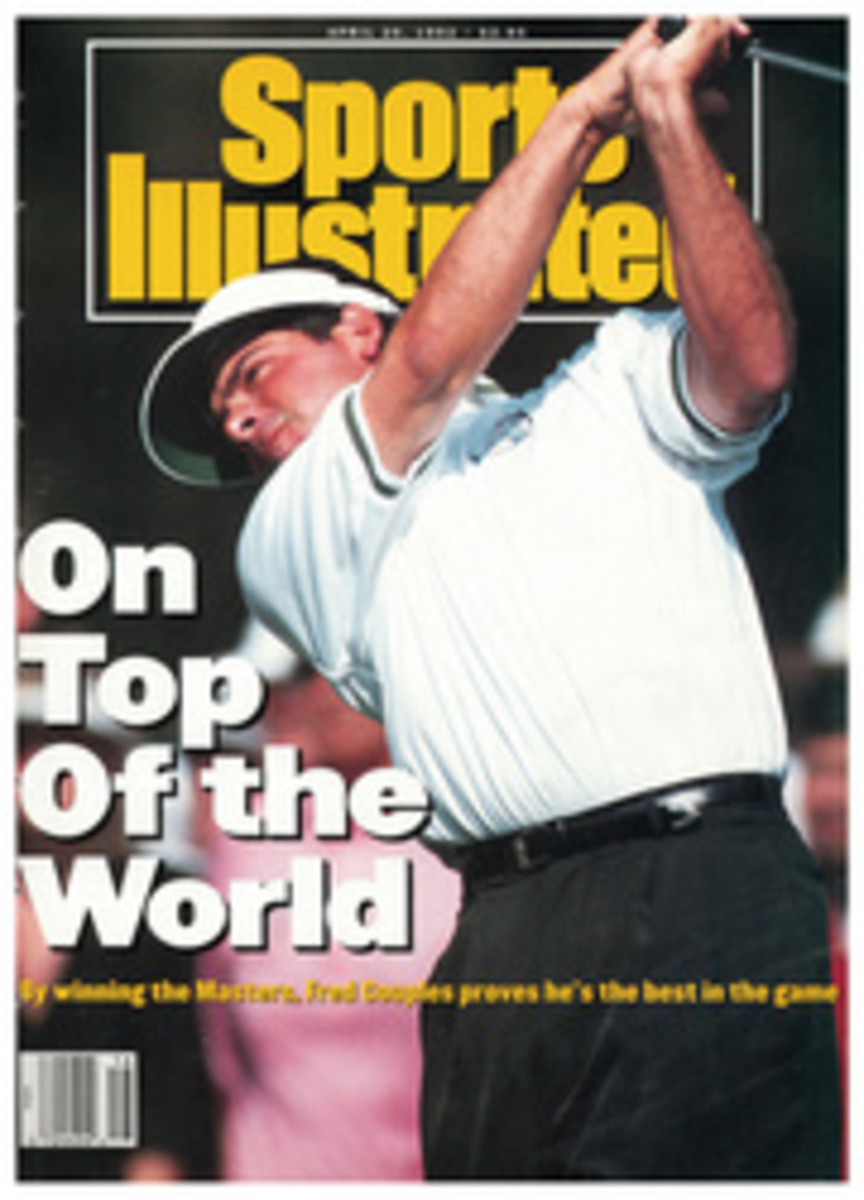
The Battle of the Birders
Part car race, cross-country chase, All-Star Game, World Series and Super Bowl, plus something very special in its own right, the Birdathon is played with birds. In the annual event, individual members and teams from the National Audubon Society's 500 chapters (there are three other divisions) compete for one day, 24 hours, to find the most species of birds during the spring migration. To give everyone a chance to hit the peak of the migration in his area, competitors can choose any day during the spring. The winners are announced after the reporting deadline of June 30.
The idea behind the Birdathon is to raise money for Audubon and its chapters. Sponsors pledge so many dollars for every species that competitors find. In 1990 the Birdathon raised $1 million; last spring the total was $1.3 million. There is also an assortment of donated prizes—ranging from bird books and spotting scopes to free Caribbean vacations for two—to regional, state and national winners, which adds zest to the competition. Not that it's needed. Anyone who pictures birders as laid-back, granola-bar-munching types has another think coming. Picture, instead, Pete Rose barreling into catcher Ray Fosse at home plate to score the winning run in the 12th inning of the 1970 All-Star Game.
With that image in mind, last spring I put my pledge money on one of the four four-member teams representing the Putnam Highlands (hereafter PutHi) Chapter from Garrison, N.Y., 50 miles north of Manhattan. My team was led by Jim Rod, 48, the manager of Audubon's Constitution Marsh Sanctuary, and included his brother Doug, 45, who used to work in Audubon's Nature Center Planning Division.
The Rod brothers have been fanatic birders since their boyhoods in Iowa. In 1968, when Jim went to Vietnam with the 173rd Airborne Brigade, where he served as a squad leader and platoon sergeant, he carried along his most treasured possession, a copy of Philip Wildash's recently published Birds of South Vietnam. Between firefights he would borrow the artillery spotter's binoculars to add to his life list of species. Upon returning home with an Air Medal a year later, he and Doug filled the back of an old Rambler American with bird books and took off on an 11,000-mile ornithological odyssey through the southern United States, Mexico and Guatemala.
The Birdathon competition for chapters is divided into three categories, based on the size of a chapter: fewer than 300 members, 300 to 999 members, and more than 1,000. PutHi is in the smallest category, but its record number of wins was unmatched by any team in any division. It had swept all its division championships—regional, state and national—an unprecedented three straight years, and in 1990 it even beat out the winner of the next-biggest category, the team from Connecticut's Housatonic Chapter.
PutHi's success stems from the fact that not only are its members ready, willing and eager to do in the opposition, but also a number of them, like characters in an Agatha Christie mystery, are just itching, aching even, to do in one another. However, they cleverly capitalize on the personal rivalries within the club ranks by dividing into four four-member teams. One is captained by Jim Rod (in the Christie mystery Jim is found dead in the gazebo with a pruning knife in his back), while the other teams are led by Lew Kingsley, a tree surgeon (the poacher who eludes the gamekeeper); Henry Turner, a direct-mail marketing specialist (the solicitor who drew up the will); and Steve Golladay, an IBM engineer (Captain Hastings). "By promoting competition among the four teams, we'll see more birds, and more birds seen by all four teams means more pledge money," Jim explained just before entering the gazebo.
The team picked Saturday, May 10, as B-Day, 4:30 p.m. as H-Hour. For part of the Birdathon, I accompanied Jim's team, which included Doug; Peter Keibel, an environmental consultant; and Arthur Berland, who used to lead guided bird walks at the Jamaica Bay Wildlife Refuge in Queens, N.Y.
At 2 p.m. Jim's team drove 70 miles to New York City to be ready to spring into action at H-Hour at its first objective—surprise!—the Jamaica Bay refuge. Another surprise! The Kingsley and Golladay subteams were in close pursuit. At the appointed hour the bird blitz began. There were herons, shorebirds, waterfowl, warblers, vireos and tanagers, and even a ring-necked pheasant and a bob-white quail, 90 species all told.
Next stop was Jones Beach, 20 miles east, where they all got four more species, among them a black skimmer. Night fell, and then as the Kingsley and Golladay teams departed, Jim chuckled and said, "I hope they enjoy dinner." He slyly reached into his pocket and withdrew a secret weapon, a tape recorder. A bird is counted as observed if Birdathon competitors can identify the species by its call. By playing a taped tweet-tweet, Jim expected a live member of a particular species (or, better yet, its enemies) to respond in the dark. "The tape recorder is a legitimate tool," Doug said, as though arguing about a loophole in the Geneva Convention before the World Court at The Hague.
The team drove 25 miles north to the Marshlands Conservancy, on the Westchester County shore of Long Island Sound, where a great horned owl had been reported. "Whhhooo, whhhooo, whhhooo," went the tape of the great horned owl, and "Whhhooo, whhhooo, whhhooo," went the live great horned owl. As a bonus, a common nighthawk also responded.
Jim and Doug got home after midnight, hit the sack and then arose at 4 a.m. to go to Constitution Marsh, a mile away on the east shore of the Hudson River. By sunup, they had added another 15 species before leaving to join Keibel and Berland, who had also risen early to scout a small farm upriver. The group met up at the Bashakill, a swampy state wildlife-management area, 35 miles across the Hudson from Garrison, where they added a couple of species rarely seen north of the Carolinas, a prothonotary warbler and a white-eyed vireo.
From the Bashakill they drove 20 miles to the sod farms of Ulster County. "This is the scarcest habitat in downstate New York," Jim said. "The birds we expect to find—upland sandpiper, bobolink, vesper sparrow—are grassland birds, and you would never find them except in big expanses of pasture." They spotted an upland sandpiper and a vesper sparrow.
Into the cars for the next objective, the woodsy habitat of the Manitoga forest garden in Garrison. "We now have 145 species," Jim said, gloating. "That's better than anyone [on the PutHi team] has ever done, we've got 2½ hours left, and there are a couple of common birds we haven't even seen yet—the white-breasted nuthatch and the chimney swift."
It was midday at Manitoga, and the birds, alas, had stopped singing in the drowsy heat. Doug waited while Jim ran back to the car to get the screech owl tape. No response. And there were no white-breasted nuthatches or chimney swifts, but Keibel and Berland, on their own, spotted a junco. Species number 146. Into the cars and back across the Bear Mountain Bridge to the Iona Marsh Estuarine Sanctuary. Bango, bango—a hooded warbler and a cerulean warbler, 147 and 148. From there up to Mine Torne Road on the U.S. Military Academy Reservation at West Point. No luck in the adjacent woods, where they hoped to spot a woodcock, as the final hour loomed, but just as they were about to leave disappointed, they joyously heard the insectlike "Seee, buzz, buzz, buzz, buzz" of a golden-winged warbler. Number 149! "Let's go!" Jim shouted. "We've got it!" Back across the river to Jim's house, where they were sure to find a white-breasted nuthatch—they came to his feeder every day—and a chimney swift. Not today, though they did get a ruby-crowned kinglet for number 150.
At 4:30 p.m. the teams assembled with relatives and friends outside the Desmond-Fish Library in Garrison. Like the solicitor reading the will, Turner asked, "Any team less than 140?" A member of Kingsley's team raised his hand. "We had 139," he said. "We had 146," Turner announced. "Gee, what a shame!" Jim exclaimed with a smirk. "Anyone with 150?" Turner asked. Like the card sharp who had finally drawn the royal flush, Jim raised a hand in obvious self-congratulation. "Anyone with 155?" Turner continued. Jim looked aghast. Golladay (Captain Hastings), whose team always finished dead last, spoke up: "We had 151." By Golladay, it turned out that his team had edged out Jim's by spotting a white-breasted nuthatch.
So much for the personal rivalries. What really counted was the money raised. With 196 species, the PutHi team collected $8,850.
Weeks passed. I kept calling Bobbie Kraus, the Director of Special Events at Audubon's headquarters in New York City, to discover who had won. "Can't tell yet," she would say. "We're still putting the results into the computer." At last, two days after the Fourth of July weekend, Jim, who was about to leave on a birding trip to Norway, called me to proclaim, "We won! The San Francisco 49ers couldn't win three Super Bowls in a row, but now we've won the Birdathon four years straight." A half-hour later Kraus called to report that PutHi had not only won its regional, state and national divisions yet again—"I know, I know," I said—but that—yes, yes, yes—it had also again topped the winning Birdathon team in the next-highest national division, the Housatonic Chapter.
Great for PutHi, but old Brooklyn fan that I am, I could inwardly hear Jim Rod, Lew Kingsley and Henry Turner muttering to themselves, "Wait until next year, Golladay."
TWO ILLUSTRATIONS
JOEL NAKAMURA

